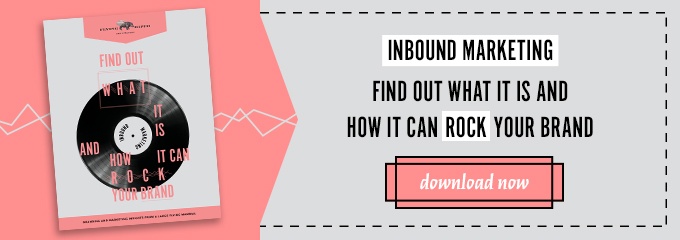 Marketing
Marketing
“Like This!” Using Social Media for Inbound Marketing
You don’t need us to tell you that your customers are on social media. It seems as if everyone is on some sort of social media platform nowadays. Personal accounts, B2B accounts, B2C accounts… heck, there’s even a BSB account! If your business is not active on social media, your marketing department is doing a big disservice to your efforts. The audience is just too huge to miss out on. Take a look for yourself at the rapidly growing numbers.
If that graph isn’t enough to persuade you (or your boss,) take into account that Facebook has 1.35 billion active users, Twitter has 284 million users and LinkedIn, the king of the business social media networks has 100 million monthly users. It’s time to move on it now. It’s never too late – at least, not now. But, remember what Mom said about always doing things right. So, for her (and for you) here are some of our best practices when it comes to the use of social media in the inbound marketing arena.
IT’S A GOOOOAAAALLLL!
Inbound marketing without a goal is just mindless marketing. Every good inbound strategy needs to have one. This goal should incorporate every branch of the inbound tree, including social media. We like to develop what are called SMART goals. SMART is an acronym for Specific Measurable Attainable Relevant and Timebound.
Are you looking to increase more leads? Convert leads into customers? Increase overall traffic? Maybe you’re just looking to nurture those contacts that are still in your funnel so they become brand evangelists? Whatever your main focus, your strategy should be designed around that end goal. It’s also important to remember that your goal may change when you’re formulating your inbound marketing strategy. Just be sure to keep everything updated… including your team and organization.
OBSERVE, TRACK, TALK
Once you’ve set your goal, the next step is to do a little research. That’s where social monitoring streams come in. With streams, you can monitor the web for conversations that consumers are having about your business. (We use Hubspot for this, but there are other options out there for you to incorporate.) This is especially helpful when looking for trends in your industry.
When determining what to monitor, you should do your best to focus on the words your personas use, or things people would actually say about you and your business. One thing to remember: try using long-tailed keywords as your stream terms. Think about the way you search for things online. Chances are, others search the same way. Once you set up your streams, keep watching, keep listening and don’t be afraid to join the conversation. Be sure to use personal replies when responding and engaging with them. Treat them like they want to be treated – like a person – not a number receiving templated responses that everyone else will receive.
YOU HAD ME AT “HELLO”
Another best practice that shouldn’t be overlooked is making certain that your social media profiles are optimized. What good is it to start a conversation with an audience when your brand isn’t represented the best it can be?
To optimize your profiles, make sure that your company’s logo is present. This sounds obvious, but mistakes happen, so be certain that the most recent logo is being used, and that you have the correct size/resolution needed. Each social media platform has their own size requirements so be sure to take a look at this infographic.
Other ways to optimize your social profile include having a clear and succinct company bio. Think of this as your introduction to your potential customer. Right along with that introduction, be sure to link to your website, too. That way, your social users will be able to see what you have to offer, easily.
I AM WHO I AM
Once you’ve started to crank out some remarkable content, you’ll want to make sure you’re using the right language, posting style and posting schedule for that specific platform. Each platform is different because their audiences and the way they engage are quite different. One thing that should be constant is your content. It should always be remarkable content that keeps audiences engaged and wanting more that is relevant to your brand and industry. Your social media posts should position you as a thought-leader. And, we can’t stress the importance of images enough. Cut through the clutter of your audiences feeds by including great images or video. So, are you ready to get posting? Before you do, take a look at some common suggestions below.
Twitter – You’ll have to keep your posts to 140 characters or less. It’s not a suggestion, it’s a hard-fast character count. As such, attention-grabbing tweets in the form of headlines, or quick questions are suggested. With Twitter, your posts might get drowned out by the sheer volume of all of the other tweets and the speed that they fly by. Recommendations for posting are anywhere from 2-6 times daily.
Facebook – No character count here, but remember your audience is completely different. They’re looking to engage and have conversations with you. So, we suggest trying to intro your content with posts that are designed to start people talking. A nice set-up followed by an engaging question is a great way to go. With Facebook, businesses should try and post at least once a day.
LinkedIn< - Position yourself as a thought-leader in the BSB and B2C world by crafting posts on LinkedIn that are engaging and skewed towards the audience of LinkedIn, tech-savvy professionals that love to network and learn. You might also want to consider starting up a LinkedIn group consisting of a network of your peers and customers alike. The industry norm with LinkedIn is anywhere from 15-20 posts per month.



